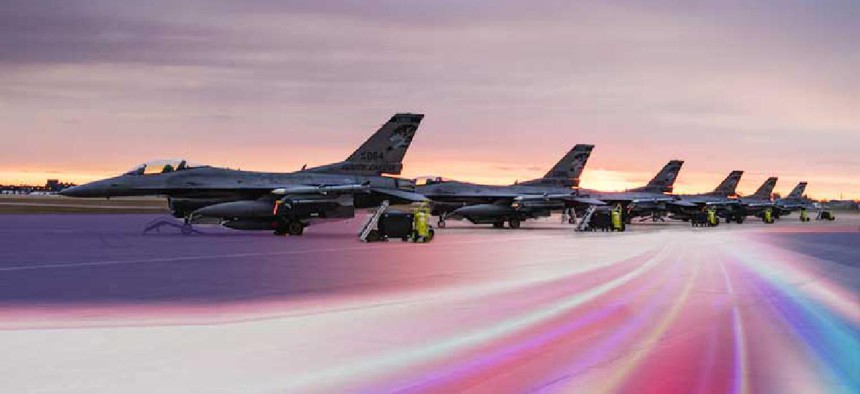Keeping up with software cadence at the Air Force Test Center

Maj. Gen. Evan Dertien, commander of the Air Force Test Center, said the organization wants rapid software update capabilities for the USAF fleet, but that approach won't work in every use case.

Keeping up with needed software updates for security and capability is an ongoing challenge for the Defense Department. But the rapid pace of software changes in the commercial sector doesn't always translate to weapons, navigation, telemetry and targeting systems.
Maj. Gen. Evan Dertien, commander of the Air Force Test Center, said not every platform will be able to accommodate iPhone-like updates because that could mean constantly having aircraft disassembled and out of commission.
"When you look at the operational challenges of doing that on a fighter [aircraft], and the fact that the work it takes maintenance to actually upload that [operational flight program] -- we don't want daily updates, I mean that would drive maintenance nuts," Dertien said.
"You'd have aircraft down, pulled apart to try to upload that -- at least where we're at for our structure right now. So the pace, I would say, is platform specific."
The solution, Dertien told reporters during the Air Force Association's Air, Space, and Cyber conference, would be to plan for smaller updates as opposed to large modernization efforts.
"Bite it off into a small chunk, and that way you can get that through testing very rapidly," Dertien said. "You get that fielded, and then you go off on the next small chunk."
Dertien said he expects future systems to be more federated, with some systems being more tolerant of bugs and errors than others. A flight control system might require a detailed robust testing system, "versus just displays in the cockpit, where I can afford to field an error and I can fix it three weeks later when I field the next [update]."
Dertien said that while system and software interoperability was necessary, there's a downside: "It also opens up a lot of attack surfaces for the cyber side."
"Now that everything's software driven, it's great for us, we can have lots of flexibility, but it's also great for our enemy," Dertien said. "So the challenge for us is how do we react when we see a new signal coming from a threat system, how do we classify it, how do we capture that data, how do we bring it back and put it in our databases, how do we distribute that back out to the aircraft."
The cyber test group at Eglin Air Force Base in Florida is charged with sifting through those vulnerabilities and assessing weapons systems' cyber readiness. The Air Force's Air Combat Command also recently stood up the 350th Spectrum Warfare Wing, also located at Eglin, to focus on electromagnetic spectrum threats, which Dertien said can be hard to replicate in testing.
The Air Force Test Center has several large test events each year with the next one coming in October. Air Force Test Center Flag Enterprise is planning a large-scale developmental test exercise across all warfighting domains for Oct. 26 at Edwards Air Force Base in California, focusing on advanced capability development, "kill web" integration and sensor effectiveness.
As the Air Force has been embracing DevSecOps to improve weapons systems' cybersecurity, it's also looking to industry to help model data solutions that can improve testing.
Dertien said the organization was in the early stages of finding commercial off-the-shelf solutions to help with processing large data sets produced through testing, sorting, presentation and analysis.
"We're finding out how we can take commercial technology that's already developed and now apply it. We have some multilevel security challenges as you have F-22s, F-35s and different weapons all integrated maybe in one database," that differ from what industry deals with, he said.
Dertien said there's no formal acquisition program yet as the Air Force lays out its data infrastructure, but the goal is to tailor those ready-made data solutions for military use.
NEXT STORY: HUD makes nearly $100M in EIS task orders






